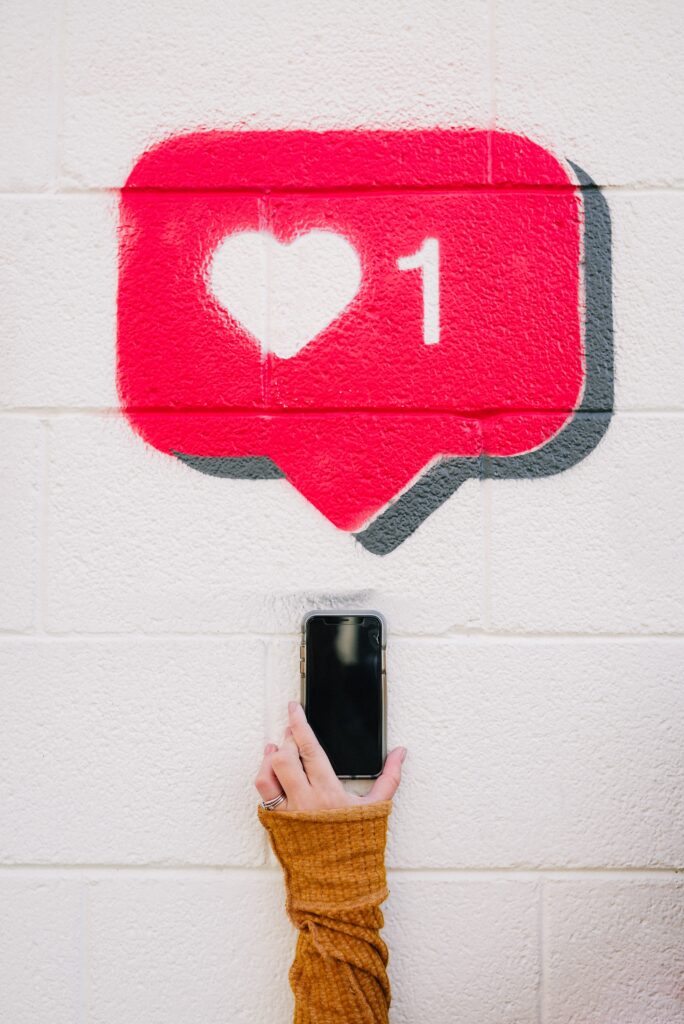It’s the debate that’s been going on for years…
The question on everyone’s minds…
‘Should I use Facebook or Instagram?’ and ‘How do I know which one’s better for my business?’
Well, in this blog we will be breaking down the two monster social media platforms and giving you our honest opinions on this highly talked about topic!
- On paper
- Target Audience
- Functionality
- So which is best
On paper
First things first, let’s crunch the numbers:
- 2.74 billion monthly active users
- 140 million+ business pages
- 67% of Facebook users visit a local business page at least once a week
- 74% of marketers say they use Facebook as part of their brand’s social strategy
- 1 billion monthly active users
- 25 million+ business profiles
- 90% of Instagram users follow a business
- 200 million Instagram users visit at least one business profile daily
- 65% of marketers say they use Instagram as part of their brand’s social strategy
So what can we take from that?
Facebook still clearly reigns as the King of Social Media with the biggest number of total active users. And it’s safe to say that in this day and age your audience is probably using Facebook, and your competitors are too.
BUT… numbers don’t always tell the full story and Instagram is clearly growing immensely as well.
So let’s pick apart these platforms a little bit further…

Target Audience
It’s key to point out that Instagram overall, is a slightly younger platform.
According to the data, young adults and teenagers mainly drive Instagram. In fact, 90% of Instagram users are below the age of 35! The biggest proportion of users are between 25-34 years old, followed by users between 18-24.
While in the land of Facebook, although still most popular amongst the 25-34 age group, older users are much more prominent and teenagers (13-17) make up the smallest group (4.9%).
Research also shows that the 18-24 group has become less prominent over time whilst the over 65+ group has become more popular, suggesting Facebook might be ageing slightly!
Why does this matter? Well, think about your target audience and where they are more likely to be. If you’re looking to target those who are over 35, you’ll probably get better luck on Facebook based on these results!
Whereas if you’re in the food, travel, beauty or fitness industries, these do particularly well on Instagram as they are a consistent hit with the younger generations.
Functionality
So now we’ve reached the fun part. What is it exactly Facebook and Instagram set out to do?
They’re both sharing platforms but are fundamentally different at the same time.
In simplest terms, Instagram is all about sharing moments. Originally this was in the form of photos but now it can be videos as well.
Facebook was made to bring people together. But since it first launched in 2004 it has grown a lot of branches and can be used for creating business pages, groups, events, and even more….
Nitty gritty info
You can find a LOT of information on Facebook. Head to a company’s page and you can see their business hours, address, contact number and email, and a detailed description of the products and services they offer. Then scroll down their page and you’ll probably see a bunch of posts with news updates, product info and customer reviews.
Customers also have the option to post questions to a business page and easily get a response from a team member, saving time and streamlining communication.
With an Instagram Business profile, brands can add some contact information but not nearly as much detail as you can on Facebook.
That’s because Instagram is purely focused on visual-based content. Users won’t come to your Instagram profile to find out your company’s business hours or to see if their friends have been to your store. They come to be inspired and engage! That’s what makes Instagram so effective for building your brand and gaining popularity.

Which leads us on to our next point…
The stuff you see is different
When you head to Instagram you’re immediately hit with visual content. And you’ll find due to the algorithm, usually the most attention-grabbing things will be right at the top. So there’s a lot of competition on Instagram to create new content which stands out.
Whilst this is still true on Facebook, it’s a lot more common to see curated content on this platform. You’ve probably noticed quite a bit of content shared on Facebook that isn’t original- blog posts, news articles or just content shared from others accounts.
This is why Facebook and Instagram provide different user experiences!
Think of it like this. If there’s a huge movie awards night happening, you’ll head to Instagram to get a glimpse at all the glamorous pictures and BTS footage. Whereas, you’ll go to Facebook to see a critic’s review article or maybe even a strong opinion.
So when choosing the type of content to post, it’s important to bear in mind this distinction!
And just to be extraaa helpful, here are another extra content differences between Instagram and Facebook:
- Hashtags are much more popular on Instagram. Hashtags are used as a tool on Instagram to group images into relevant categories, allowing users to search for relevant content. But this feature is used a lot less on Facebook and studies show engagement actually decreases on Facebook posts when you use more hashtags!
- Influencer content is BIG on Instagram. Would you business benefit from being endorsed by an influencer? Then consider using Instagram which has become a hub for all kinds of influencers both big and small who are looking for opportunities to collaborate with brands.

Engagement
Likes, comments, shares, bookmarks, these are all forms of engagement- the most sought after metric on social media.
Because at the end, what’s the point in posting if your audience doesn’t care?
So it’s interesting that Instagram generates higher levels of engagement than Facebook. To get mathsy- brands see a median engagement rate of 0.09% per Facebook post, in comparison to a 1.60% median engagement rate per post on Instagram – a sizeable difference!
This doesn’t mean your posts will always receive more engagement on Instagram however. For instance, whilst images perform better on Instagram (this is what Instagram was made for after all), lengthy informative descriptions tend to do better on Facebook.
So remember – always consider how your audience uses each network.

How driving traffic varies
Okay this is a big one. It’s much easier to drive traffic to your website on Facebook.
Links are everywhere on Facebook. Taking you to shopping sites, news articles, blog posts and all sorts.
But it’s a lot more tricky to do this on Instagram as you can’t include clickable links in Instagram posts yet! There are a few ways around this (swipe up stories and one clickable link in the Instagram bio) however these are additional tasks for users and less likely to be used.
So whilst Instagram is still great for spreading awareness around your brand, it’s not so good at generating website traffic as the powerhouse Facebook is.
So which is best?
So it’s crunch time. Drum roll please…..
The annoying answer is we can’t tell you. It’s for you to work out what’s best for your business.
For most, that means using both! And if you have the time to invest in both platforms then we suggest you shape your content to fit the purpose. Content that performs well on Facebook doesn’t always translate over well to Instagram.
So if you’re stuck, test them both out and find out what works for you.
For more social media advice and guidance, get in touch with our social media experts!


